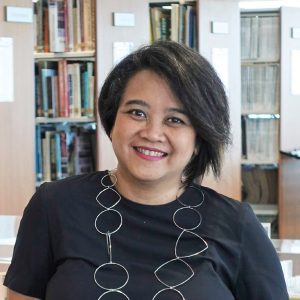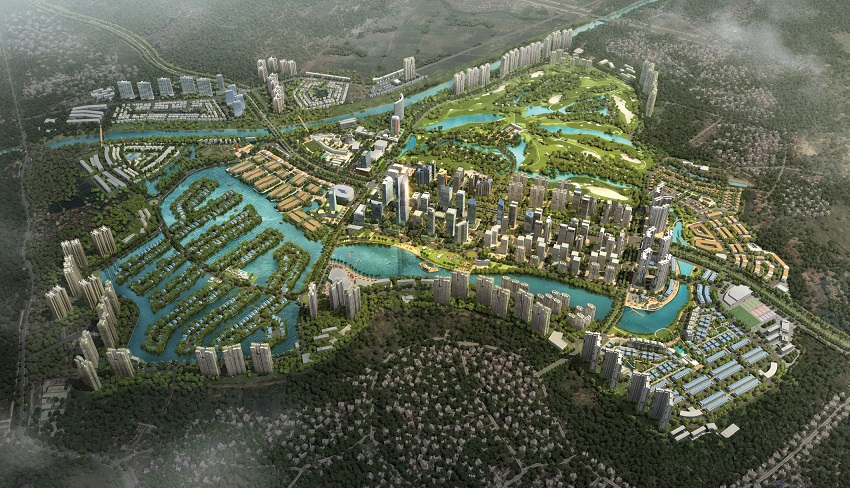 With her expertise in urban design and master planning, Cerina seeks to deliver innovative solutions for sustainable living.
With her expertise in urban design and master planning, Cerina seeks to deliver innovative solutions for sustainable living.
Trained as an architect and urban designer in Parahyangan Catholic University Bandung, West Java, and later in Columbia University New York under Fulbright Scholarship, Cerina is now vice president at CPG Consultants—one of Asia Pacific’s multi-disciplinary one-stop consultancy firm—and council member of the Singapore Institute of Planners.
With more than 20 years of comprehensive design experience with a range of project types, from healthcare, and industrial parks to residential townships and commercial mixed developments, Cerina shares her thoughts and experiences with Construction+.

Master planning involves not only design but also local contexts, users and market conditions
How did you get involved in urban design, and how would you describe your approach in this field?
I have always been fascinated with urban design, as it deals with the public realm and the in-between spaces of public and private.
The field of urban design was introduced to me in my last two years of architecture curriculum in university, and I simply fell in love with it. After my graduation, I moved back to Jakarta to work as an urban designer.
My signature style is to take a pragmatic and sensitive approach to every project, considering not only the design itself, but also the local contexts, users and market conditions, among other defining forces.
How does this approach apply in terms of designing and planning urban environments for affordable housing projects?
Affordable housing schemes are often key components of our large-scale developments. Having an understanding of the local context where the project is located in is crucial in ensuring that the urban solutions we propose are both implementable and successful.
One fundamental thing to consider is the social and humanity aspect of it. As architects and urban designers, we need to understand the customs, routines and daily activities of local residents, and in turn, the spaces needed to accommodate these activities.
By understanding this, and accounting for other contextual forces, we could then propose appropriate solutions and designs to shape the spaces more effectively and efficiently. The result is a more sustainable and liveable environment that people actually use. There are, unfortunately, cases where housing areas are over-designed and eventually unused, which defeats the design intent.
With Singapore’s home ownership already exceeding 90 per cent of the population, do you see any other housing challenges that need to be addressed?
I do believe that Singapore has been prudent with the planning of the housing policies and mechanisms involved. It has proven to be effective, and we definitely can see the results.
Even in good times, one must not get complacent. It would be good to review these long-standing housing policies and mechanism to ensure that it doesn’t result in any impending issues.
Moving forward, one of the challenges to note would be the balance between supply and demand of housing, both public and private, which has implications for the housing markets and home prices. Singapore’s population growth has been relatively low for the past few years, so the government has to ensure there will not be a glut in the market.
Another major challenge is housing for the country’s ageing population. Singapore’s population is ageing rapidly, with the 65-years-and-older population projected to double by 2030. Many seniors will be living in larger-than-needed-flats as their children move out or their partner passes away.
So the issue now is how to provide age-friendly housing and neighbourhoods for this population. A lack of supply of smaller-sized housing might occur if these seniors decide to downgrade their houses around the same time. We need to be ready when this ‘silver tsunami’ hits in 2030.
At CPG Consultants, we are currently collaborating with the Lee Kuan Yew Centre for Innovative Cities, Singapore University of Technology and Design, Geriatric Education & Research Institute, Tierra Design and Lekker Architects, together with government agencies (Urban Redevelopment Authority, Agency for Integrated Care, Building and Construction Authority, Housing & Development Board, and Ministry of Health), to come up with innovative planning and design of age-friendly neighbourhoods in Singapore. The project is funded by the Ministry of National Development and National Research Foundation Singapore under the Land & Liveability Nation Innovation Challenge (L2 NIC) grant.
What would you consider your greatest accomplishment as an urban planner?
In CPG Urban Planning, we have a thinking approach called ‘Cities of Success’, where our designs have to be sustainable, memorable, and marketable. If spaces that we design achieve these three objectives, I believe we have succeeded, and that itself will become our legacy.
Our team has won a few major accolades in the past five years, locally and internationally, and awards always motivate us to create better designs and solutions for our projects. But for me personally, we are not doing projects just to win awards—awards are only a bonus for doing good work.
Urban designers are a populist bunch, so our legacy will be the successful public spaces that we have created. To have our designed spaces work and become vibrant places that people enjoy and use for many years to come is already an achievement in itself, and I feel it is much more rewarding.
What are your upcoming plans for the year?
I believe change is the only constant thing in life, so I always seek to improve myself by expanding my knowledge, be it relating to urban design or even management and leadership, as I currently assist our studio head in leading the CPG Urban Planning studio.
Successful urban design requires strong teamwork. Our team right now is one of the finest team I have ever worked with, but I believe we still have room for improvement. I aim for our team to be even better in the future, to always deliver more innovative solutions and create better places for all.
To read the whole issue of Construction+, please download the Construction Plus App on the App Store or Google Play.

 Malaysia
Malaysia Hong Kong
Hong Kong Indonesia
Indonesia Tiếng Việt
Tiếng Việt ประเทศไทย
ประเทศไทย









